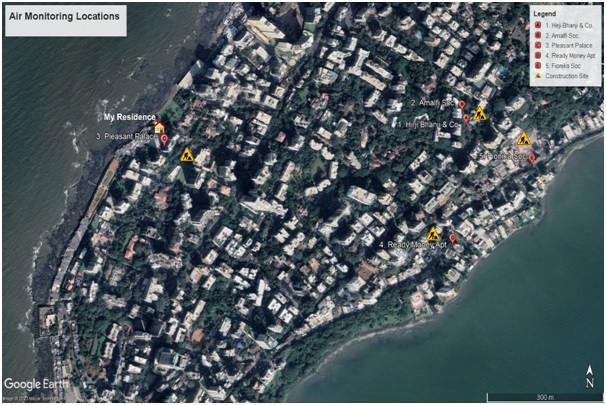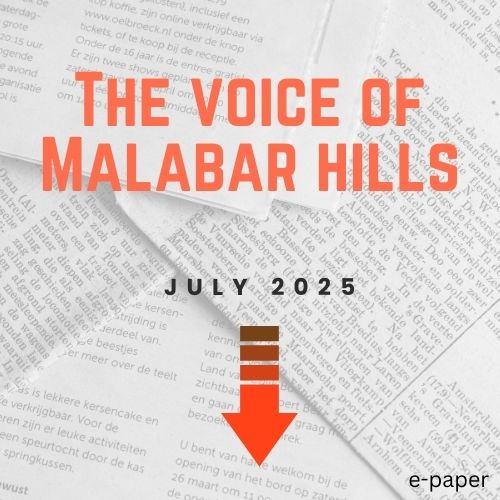Environmental research by a student of our Neighbourhood
I, Akshay Vora am a student of the Cathedral and John Connon School, currently studying in Grade 12 of the IBDP Program. I am currently studying Global Politics (GP) at the Higher Level in the IBDP Program. I have been actively engaged in one of my IAs in GP on urban development which focuses on the recent changes in Coastal Regulation Zone (CRZ) norms that have resulted in increased Floor Space Index (FSI) allowances in Mumbai. Consequently, there has been a surge in redevelopment projects for older buildings.

Construction sites emit various pollutants, primarily dust, pollutant gases from vehicles, VOCs, and noise, spreading through the air by wind. These contaminants include different fractions of particulate matter (PM10, PM2.5, PM1), gases like carbon monoxide, carbon dioxide, nitrogen oxides from vehicles, and VOCs from painting and finishing.
This phenomenon is an inevitable part of the city’s developmental cycle which could lead to amplified levels of both air and noise pollution, affecting the lives of common citizens. As a concerned citizen of Mumbai, I worked as a volunteer with an Environmental Engineering and consulting firm- Eco Ventures Pvt Ltd to help me monitor the pollution levels near construction sites, with a sensor-based air monitoring machine (cAAQMS) from AUG Signals, Canada called “AirSENCE DUST WATCH.”
To facilitate the project, I first sought approval from the residential societies and establishments near construction and redevelopment sites around my residence for the installation of air monitoring devices at their premises. These sensor-based devices were strategically placed in affected locations to monitor air and sound pollution levels. The gathered data on ambient air quality was then meticulously analyzed.
Subsequently, the research findings were presented to the area’s elected representative – the local corporator. The presentation not only included an overview of pollution levels but also involved proposing practical measures aimed at mitigating the adverse effects of construction-related hazards for the benefit of affected citizens, property developers, and the government alike. The locations were:
A: Hirji Bhanji Stores, L. D. Ruparel Marg, Malabar Hill, Mumbai
B: Amalfi building, L.D. Ruparel Marg, Malabar Hill, Mumbai
C: Pleasant Palace building, Narayan Dabholkar Road, Mumbai
D: ReadyMoney Apartments, Walkeshwar Road, Mumbai
E: Fionika building, Walkeshwar Road, Mumbai.
(We appreciate the efforts of Akshay Vora and wish him the best in his studies and for his future)






Superb article- eye opener. Incredible research and detailed analysis.
Very good read.